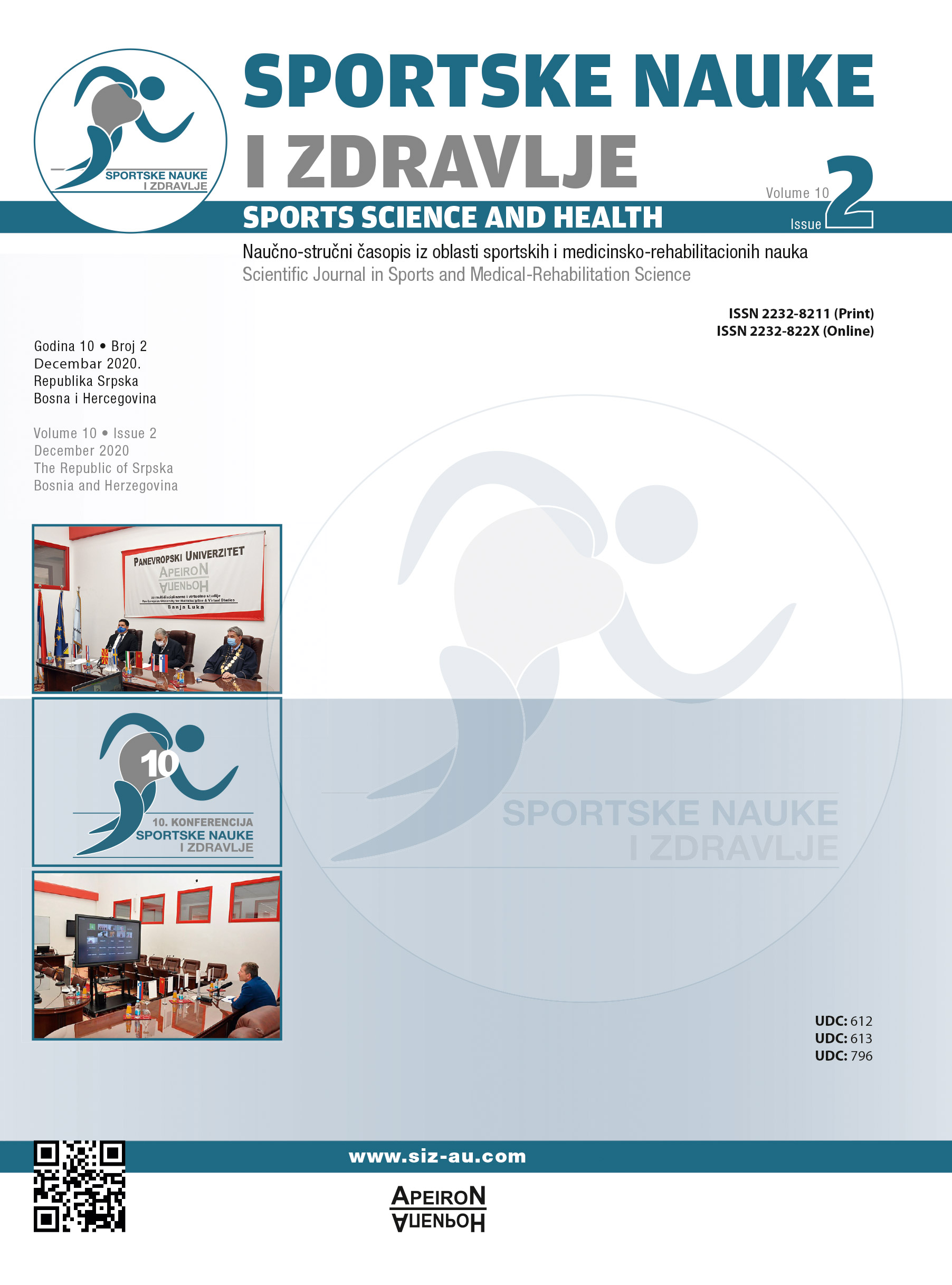Physical Activity of Students During the Pandemic of the Disease Covid-19
DOI:
https://doi.org/10.7251/SSH2002108AAbstract
In mid-March of 2020, contact teaching at universities was interrupted due to the global pandemic of the disease COVID-19. While the teaching of Physical education took place online students were offered several assignments to fulfil their obligation to the course and try to stay physically active. The research was conducted on 166 participants from the student population of the University of Zagreb who, during the seventh week of online classes, filled out an online questionnaire related to physical activity and online teaching of physical education. The aim of the research was to determine whether there was a difference in the level of physical activity of students before and during the COVID-19 pandemic and whether there was a difference in the level of physical activity according to the gender of the research participants. Furthermore, to determine whether students had the desire to be physically active during the COVID-19 pandemic, whether they were satisfied with online teaching of physical education, and whether online teaching of physical education helped them stay physically active, and whether or not gender differences relevant to the research existed. Wilcoxon rank test demonstrated increased activity of research participants during the COVID-19 pandemic (z=-4.61, p=0.00) with no gender difference. As many as 94,6% of the research participants expressed a desire for physical activity during the pandemic, and 80,1% of them believed that online learning of physical education courses helped them in that goal. A significant difference between male and female students, in favour of female students, was obtained by the χ2 independence test, precisely for the question whether they believed that online teaching of physical education helped them remain physically active. A total of 85,5% of research participants stated they liked online learning. Digital technology in teaching physical education is welcome, but is in no way a substitute for contact teaching. It could be considered as a sort of an intervention which could occasionally be used to refer students towards online assignments during the course of the academic year to enable them to gather additional points and thus, encourage them to take on additional physical activity.
